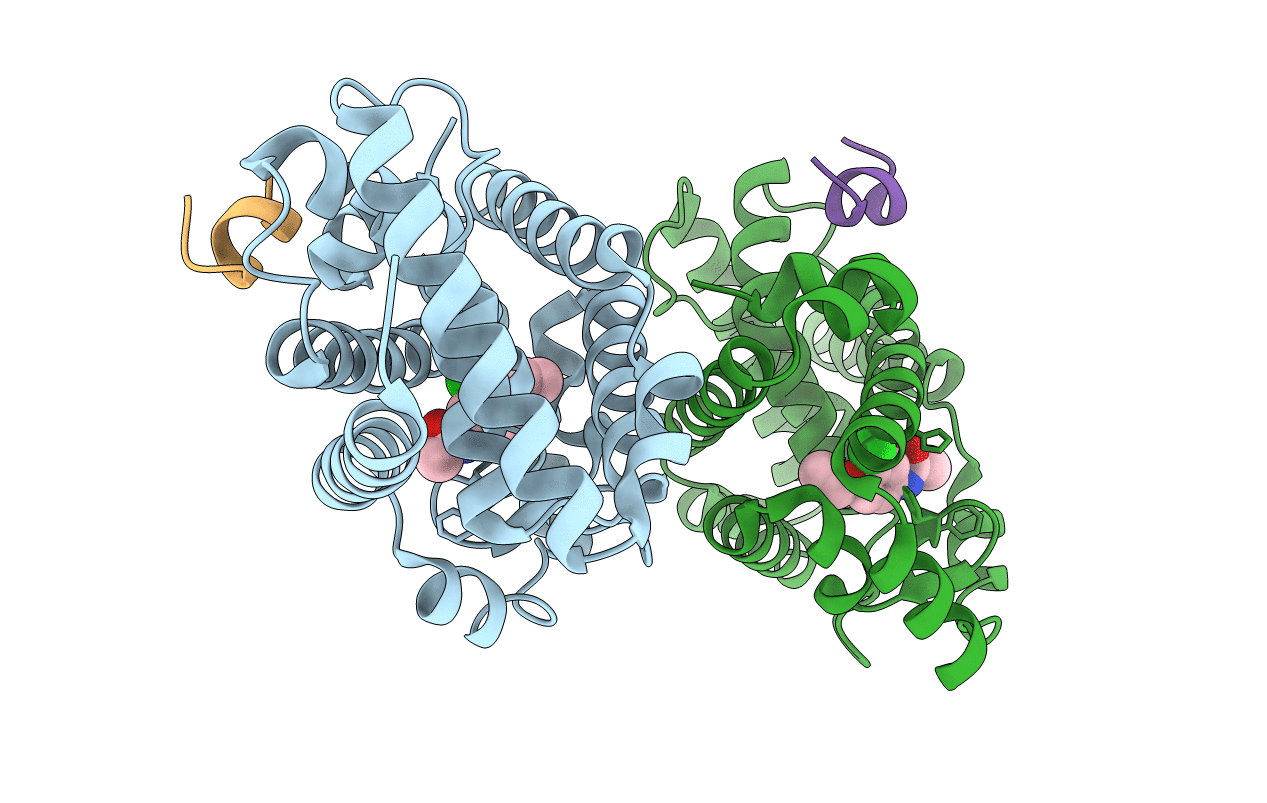
Deposition Date
2018-03-15
Release Date
2018-07-18
Last Version Date
2024-01-17
Entry Detail
PDB ID:
6FZU
Keywords:
Title:
RORGT (264-518;C455S) IN COMPLEX WITH THE FRAGMENT ("CPD-1") AND RIP140 PEPTIDE AT 1.80A
Biological Source:
Source Organism:
Homo sapiens (Taxon ID: 9606)
Host Organism:
Method Details:
Experimental Method:
Resolution:
1.80 Å
R-Value Free:
0.25
R-Value Work:
0.21
R-Value Observed:
0.21
Space Group:
P 1 21 1


